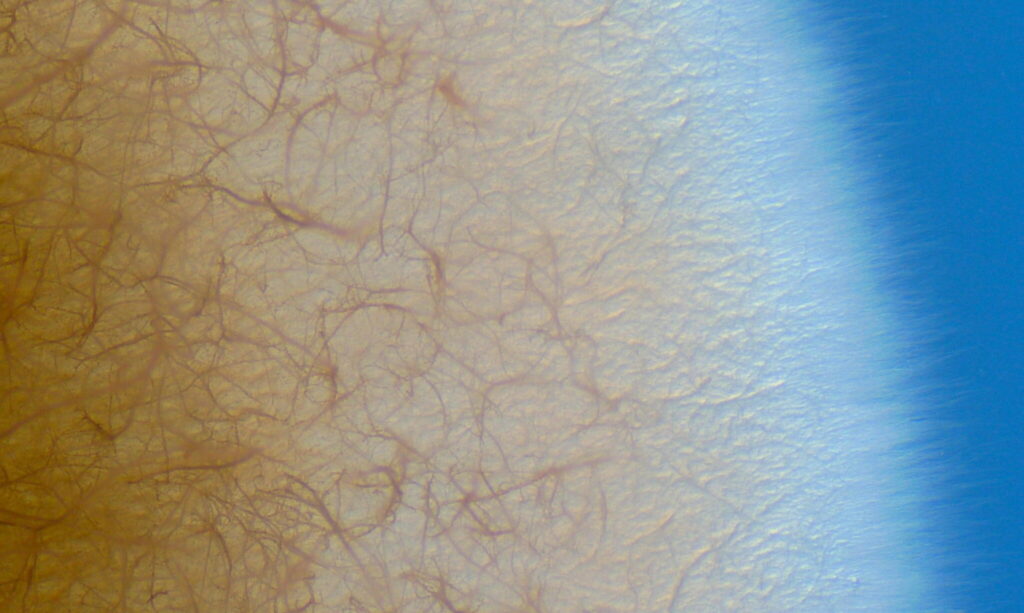The Unseen Diversity in Wheaton Woods
- Name: Madeleine Lambert
- Pronouns: She/Her/Hers
- Major: Biology
- Class Year: 2022
I was nominated for the Academic Festival by Professor Primrose Boynton Ph.D. I was also assisted by the Biology faculty, Professor Jennifer Lanni Ph.D., and Professor Shawn McCafferty Ph.D. While working on my biology degree, I came to learn that I have a passion for microbe-host interactions. I saw my independent studies as an opportunity to explore these relationships between microbes.
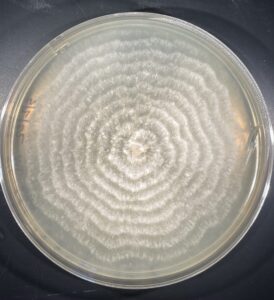
Due to the pandemic, I was a remote student for the entirety of my junior year. The online experience academically was survivable, but there’s no substitute for being on campus and the crisp New England fall air. I missed it and welcomed the opportunity to be out in the Wheaton Woods conducting research. While collecting samples for my work, I soaked in the beauty and quiet of my surroundings. I was grateful to be back.
The leaf litter that coats the Wheaton woodland floor is a richly diverse ecosystem. Many different types of insects, animals, birds, and plants live in the woods behind our campus, but how often do we think about the leaves beneath our feet? Leaves from many different trees fall to the ground forming a habitat with its own ecological community. In this leaf litter, you can find an abundance of microorganisms, insects, plants, and fungi. All of these diverse agents work in tandem to break down the leaves and renew the forest with a fresh layer of soil, containing a wealth of nutrients.
Leaf litter is primarily broken down by a type of fungus known as cellulose-degrading filamentous fungi. With the exception of yeast, these organisms spread in microscopic string-like structures called hyphae, or filaments. The mushrooms seen in the woods grow when many filaments bind together to form the mushroom body. Unless the fungi have coalesced to form structures, like a mushroom, they are invisible to the naked eye. Though you can not see them, you are surrounded by microscopic wonders in Wheaton Woods.
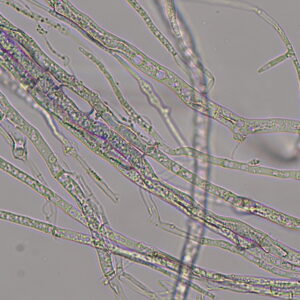
The type of filamentous fungi I investigated live within decomposing leaves. Known as cellulose degraders, they grow in strands between the cells of a leaf. Cellulose is tough, hard to break down, and creates the backbone of plants. It is used as food by these fungi. A network of hyphae breaks down the structure of the leaves or cellulose and converts it to sugar. The sugar is then consumed by the fungi, and the cycle repeats, breaking down more leaves.
To understand the extent of diversity existing in Wheaton Woods, I gathered leaf litter to sample the variety of filamentous fungi. Collecting seventy-two leaf samples, I worked to make a substance that would encourage the fungi to grow out from the leaf, and onto the petri dish. From this, I was able to isolate fungi. By placing these isolated cultures onto cellulose media and having them grow, I confirmed they were cellulose degraders. Nine cultures met the criteria of cellulose-degrading filamentous fungi.
Of the nine cultures, seven yielded genetic sequences. When comparing results to the international database of fungi genomes, five samples are unique, meaning that they have yet to be studied. Using these gene sequences to identify relatedness, I created a tree (Figure 1). In doing this, I learned that all of my samples are Ascomycetes, which is a phylum within the Fungi kingdom. All nine of my cultures had different appearances demonstrating just how diverse these fungi can be.
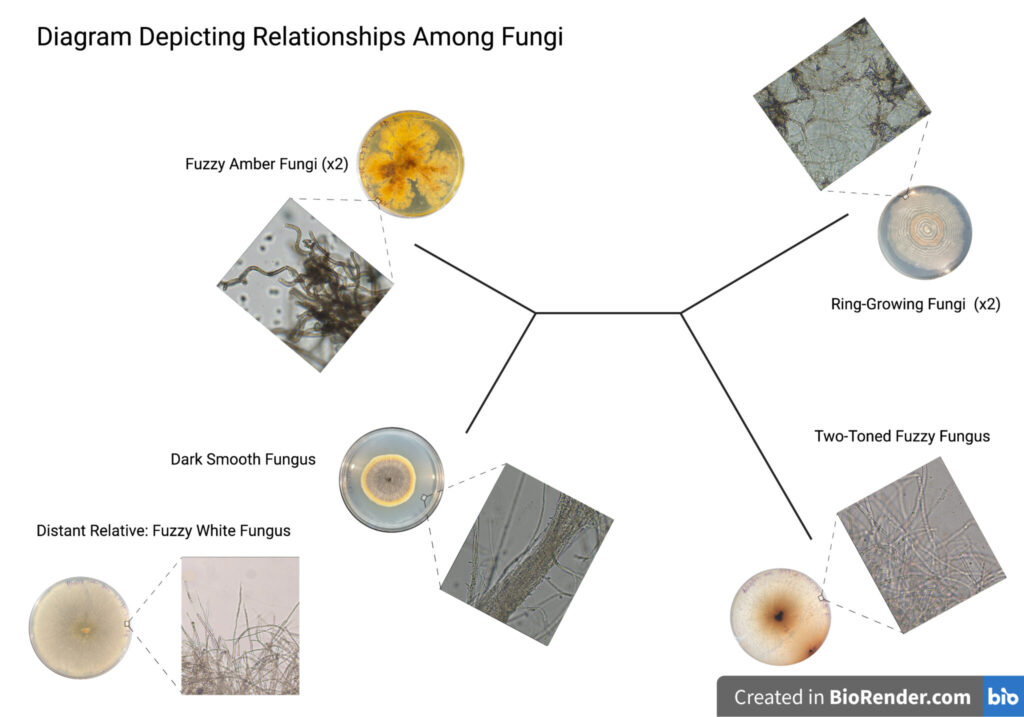
These cellulose-degrading filamentous fungi may have an interaction with the wild yeast genus Saccharomyces. Yeast are single-celled fungi that grow in a non-filamentous form. The most commonly known member of Saccharomyces is Saccharomyces cerevisiae, or baker’s yeast. How these yeast live in nature is a mystery as there are no available sugars in the environment. Baker’s yeast doesn’t have the capability to break down complex carbon sources like cellulose.
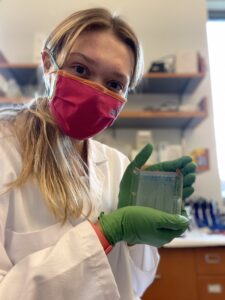
I have hypothesized that these yeasts have a parasitic relationship with cellulose-degrading filamentous fungi. I believe Baker’s yeast utilizes sugars the fungi make when they break down cellulose, allowing them to thrive. This hypothesis has yet to be studied, though future students in the Boynton lab will work to explore this topic. Previous students in the Boynton lab collected Saccharomyces paradoxus, a close relative to Baker’s yeast cultures, from the Wheaton Woods. When this project is studied in the future, students will use the yeast Saccharomyces paradoxus to look into the relationship. Future research could also include the characterization and naming of the nine isolates I collected from Wheaton Woods.
This process of discovery and identification was gratifying and exciting. I was able to discover new species of fungi. Conducting this research gave me the confidence and skill to work in the lab independently. I developed the ability to design protocols, document my progress, and draw my own conclusions in response to the data. Despite the quiet of working alone, I loved trying to puzzle out the complexities of our natural world. As a result of my rewarding experience, I plan to continue to learn and pursue graduate studies in microbiology and focus my studies on infectious disease.
